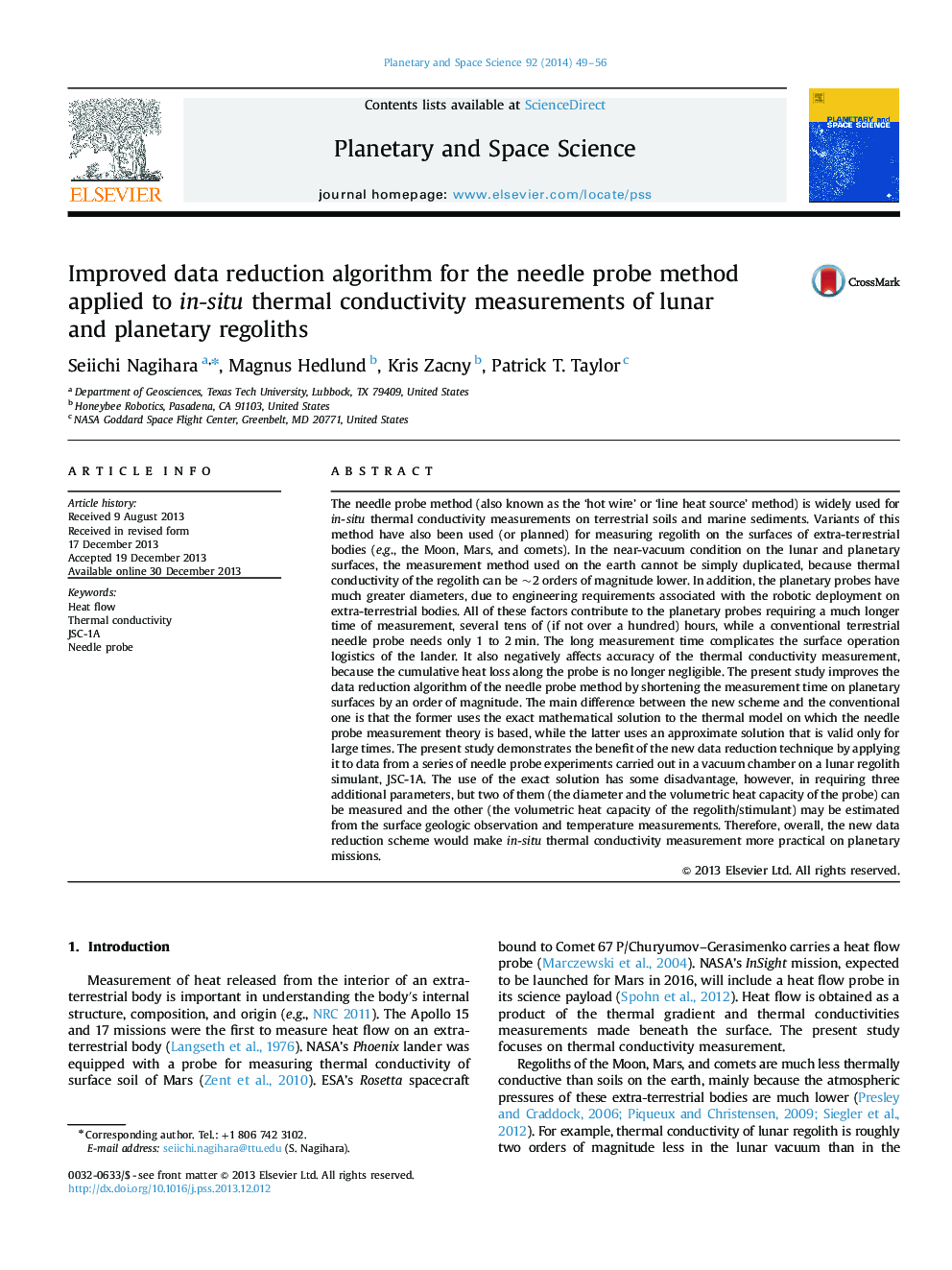| Article ID | Journal | Published Year | Pages | File Type |
|---|---|---|---|---|
| 1781163 | Planetary and Space Science | 2014 | 8 Pages |
•We improved the needle-probe thermal conductivity measurement method.•The improvement minimizes time required for a single measurement in near-vacuum.•The improvement makes the method more suitable for planetary missions.•The improved method was tested on JSC-1A stimulant in a vacuum chamber.
The needle probe method (also known as the ‘hot wire’ or ‘line heat source’ method) is widely used for in-situ thermal conductivity measurements on terrestrial soils and marine sediments. Variants of this method have also been used (or planned) for measuring regolith on the surfaces of extra-terrestrial bodies (e.g., the Moon, Mars, and comets). In the near-vacuum condition on the lunar and planetary surfaces, the measurement method used on the earth cannot be simply duplicated, because thermal conductivity of the regolith can be ~2 orders of magnitude lower. In addition, the planetary probes have much greater diameters, due to engineering requirements associated with the robotic deployment on extra-terrestrial bodies. All of these factors contribute to the planetary probes requiring a much longer time of measurement, several tens of (if not over a hundred) hours, while a conventional terrestrial needle probe needs only 1 to 2 min. The long measurement time complicates the surface operation logistics of the lander. It also negatively affects accuracy of the thermal conductivity measurement, because the cumulative heat loss along the probe is no longer negligible. The present study improves the data reduction algorithm of the needle probe method by shortening the measurement time on planetary surfaces by an order of magnitude. The main difference between the new scheme and the conventional one is that the former uses the exact mathematical solution to the thermal model on which the needle probe measurement theory is based, while the latter uses an approximate solution that is valid only for large times. The present study demonstrates the benefit of the new data reduction technique by applying it to data from a series of needle probe experiments carried out in a vacuum chamber on a lunar regolith simulant, JSC-1A. The use of the exact solution has some disadvantage, however, in requiring three additional parameters, but two of them (the diameter and the volumetric heat capacity of the probe) can be measured and the other (the volumetric heat capacity of the regolith/stimulant) may be estimated from the surface geologic observation and temperature measurements. Therefore, overall, the new data reduction scheme would make in-situ thermal conductivity measurement more practical on planetary missions.
